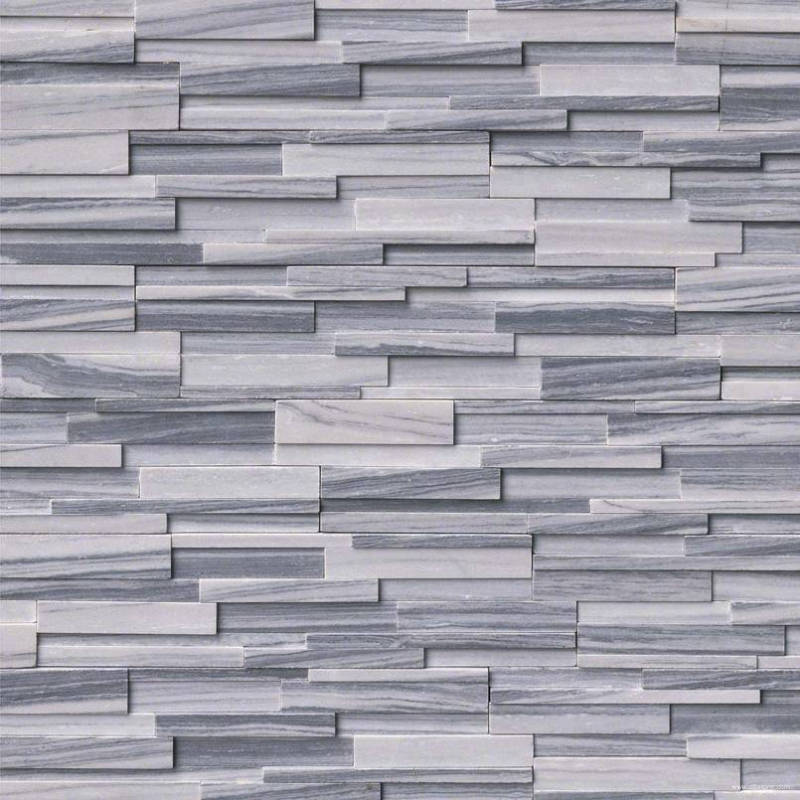
Ledge Stone is one of the truly classic stone styles that has withstood the test of time with only slight refinements along the way. In its most basic sense, Ledge Stone is a pattern of stonework utilizing horizontal joints. The pattern is typically made up of individually stacked pieces of stone where the horizontal ledge is more defined than the vertical joins. Traditionally this look was achieved by laying the stone piece by piece by hand. While this technique is tried and true, it is also very time consuming, labor intensive, and expensive if paying a mason or specialist to complete the work.
Ledge Stone is great for many applications. It can be applied to exterior projects such as outdoor kitchens, retaining walls, exterior feature walls and even pools and water features. It is also a popular accent for front porches and columns.
Bèl sistèm wòch natirèl anpile pou miray deyò

For as many exterior uses, there are just as many, if not more interior uses. Ledge Stone looks great on fireplaces, backsplashes and even in bathrooms to give a spa like feel to the space. It is also great to use in sunrooms to bring a little of the outdoors in.
The other appealing feature of Ledge Stone is its diversity and ability to fit into most décor schemes. As a result of the emphasis on the horizontal joints, the stone stays traditional but the layout can lend to a somewhat contemporary feel. It is a nice blend of the old and new, traditional yet modern. The height and shape of the individual pieces in a ledgestone will also dictate how modern or traditional it appears.
Overall, Ledge Stone is a great option when considering a hard surface wall finish and is a look that has stood the test of time, both literally and in the design sense. Today we have options to make it an affordable reality in our own homes!